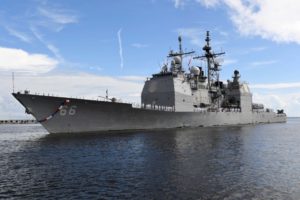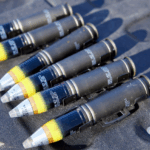
Lawmakers on a congressional panel continued pushing back against Navy plans to retire seven Ticonderoga-class cruisers due to cost, including two vessels added to the plan this year, while officials explained the cost balancing and maintenance issues. House Armed Services Subcommittee on Seapower and Projection Forces Chairman Rep. Joe Courtney (D-Conn.) asked what the Navy’s thinking was on decommissioning these ships and how to make up for the loss of Vertical Launching System (VLS) missile tubes on the ships during…

 By
By 











